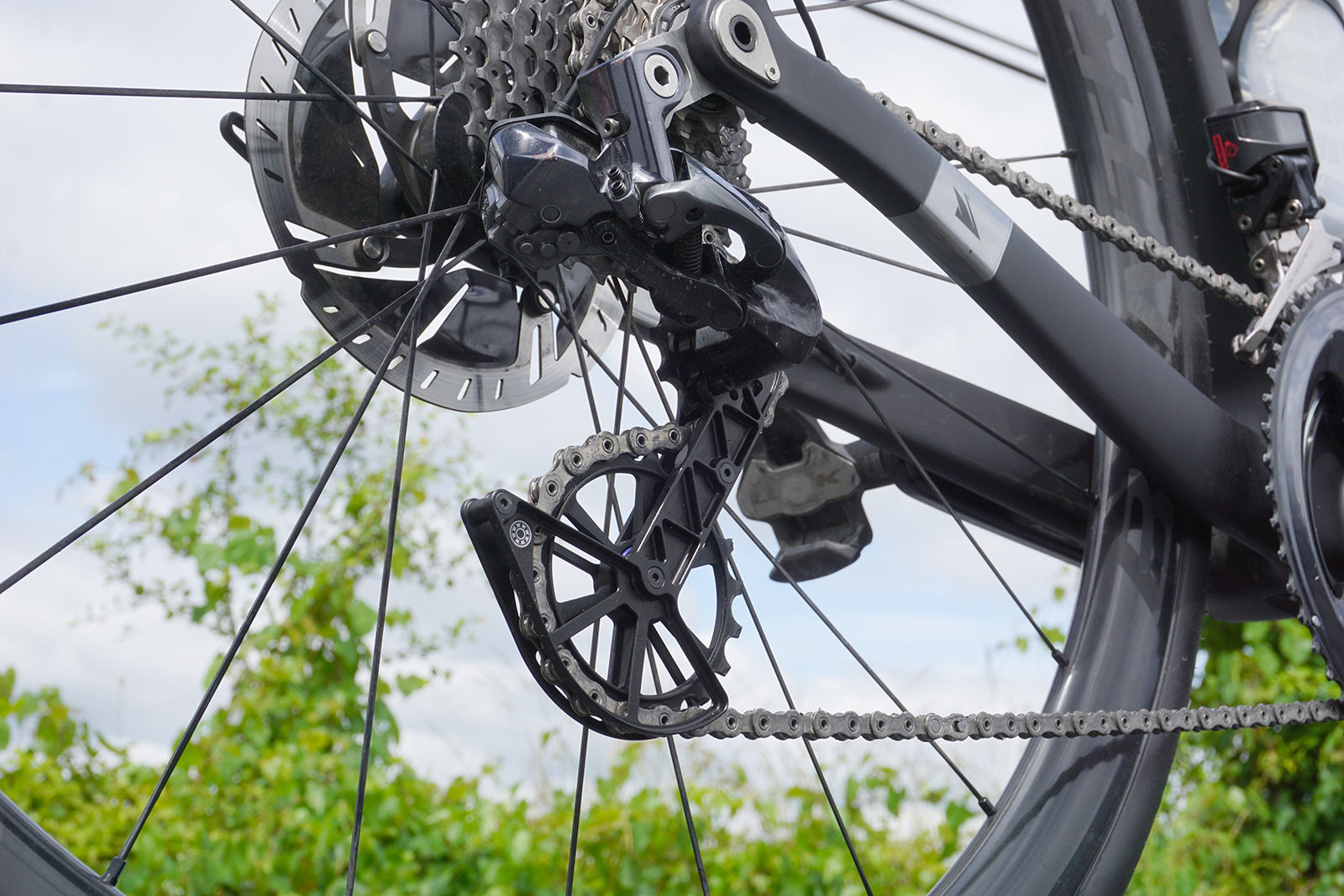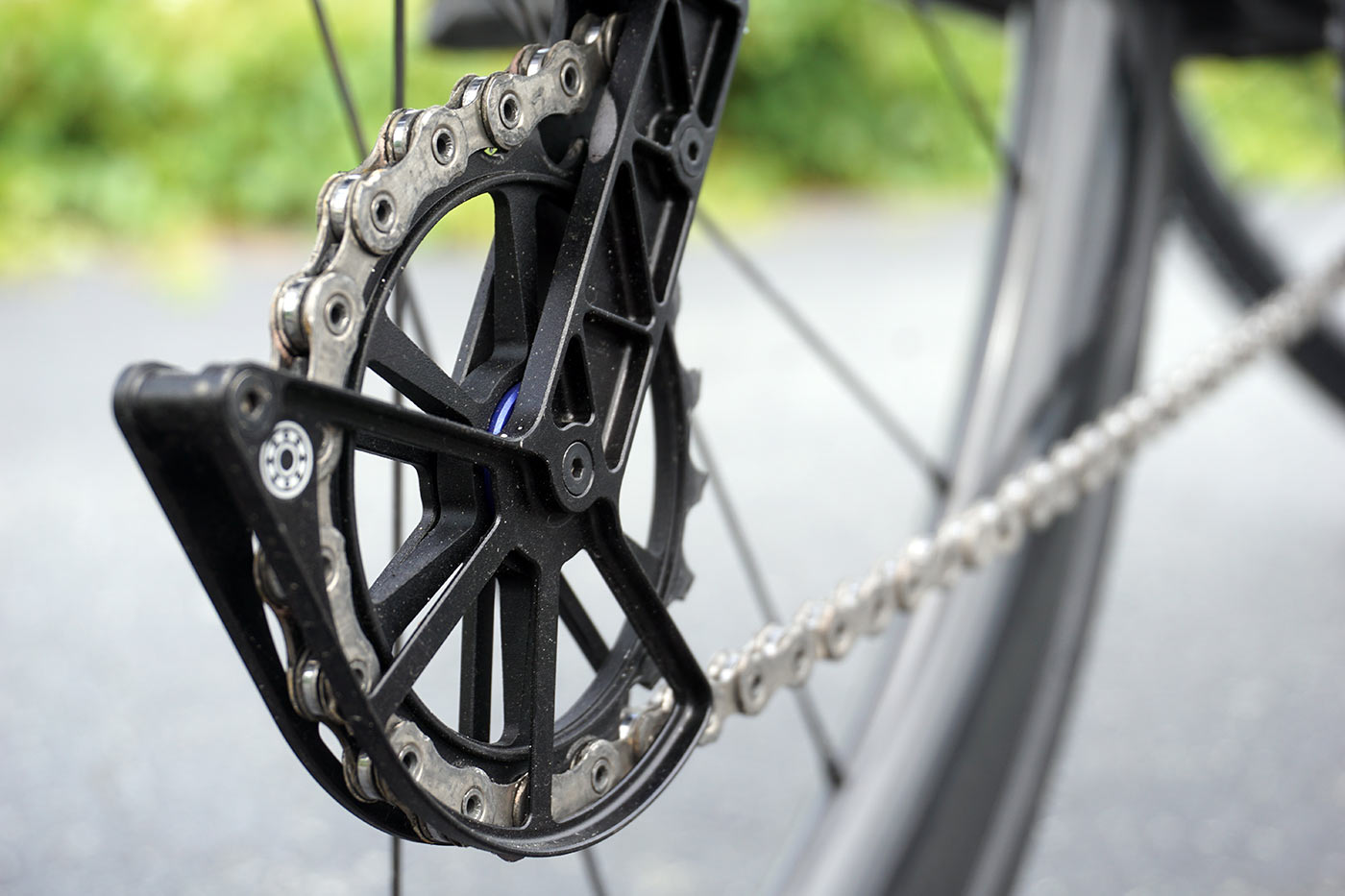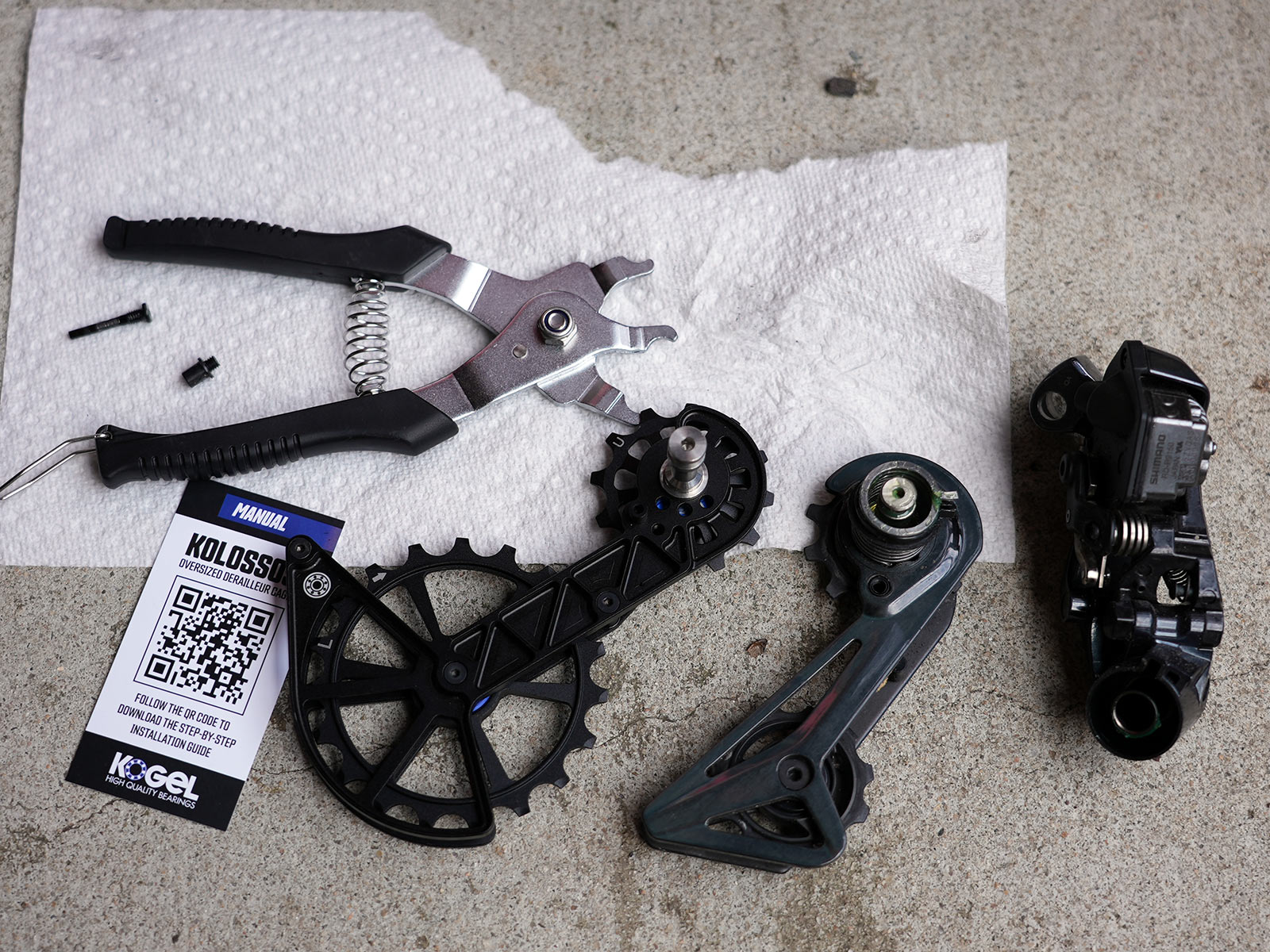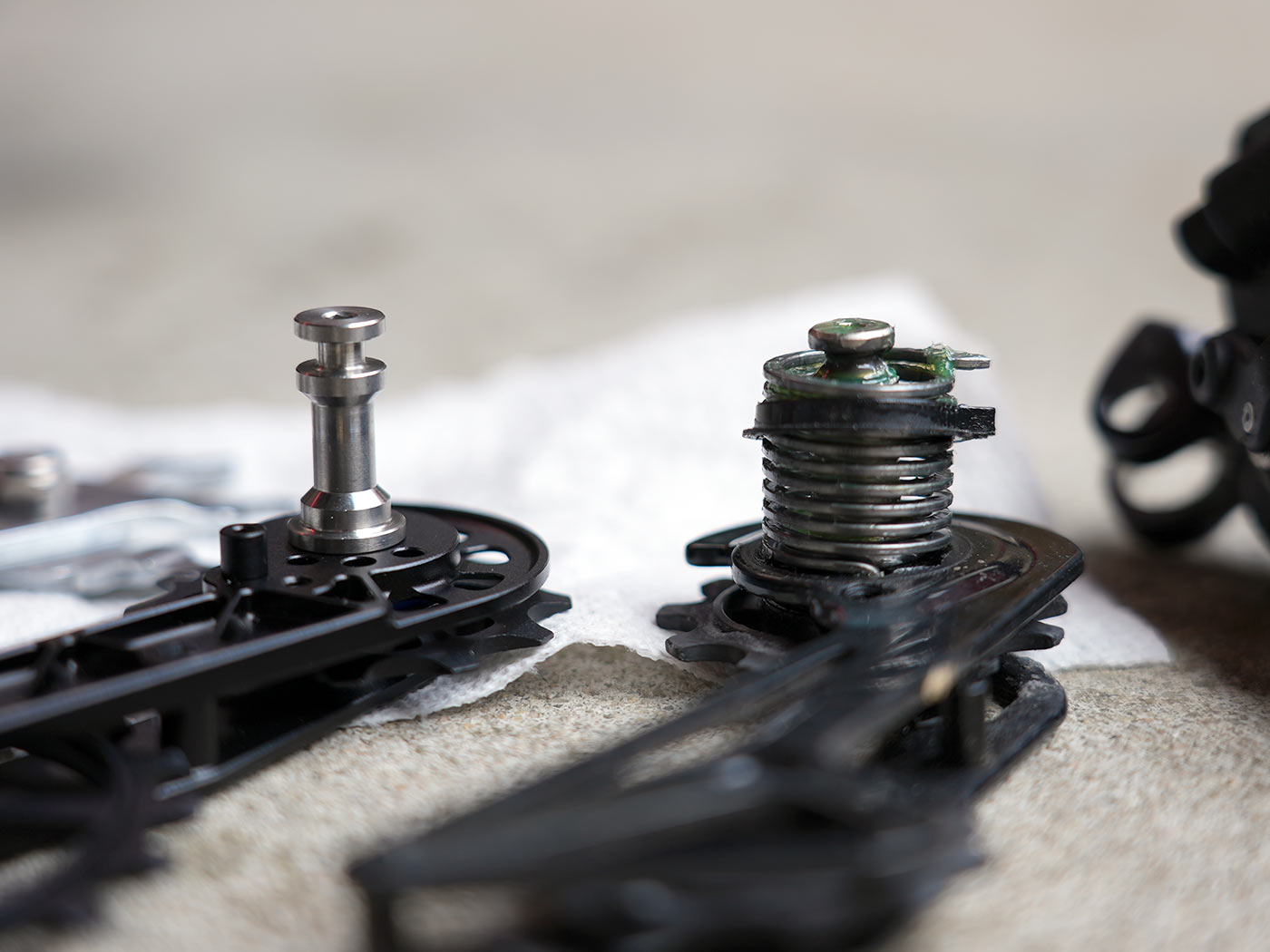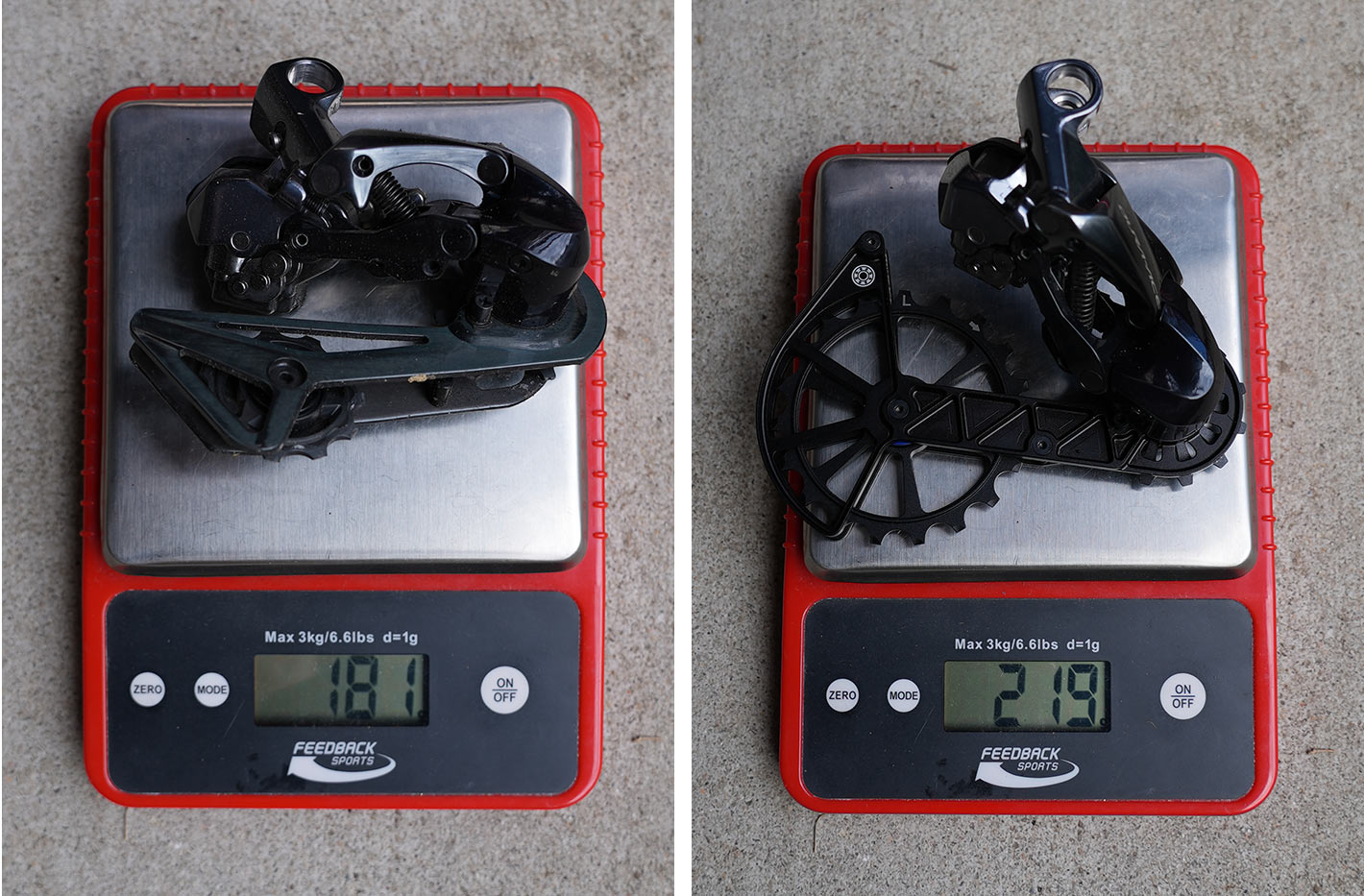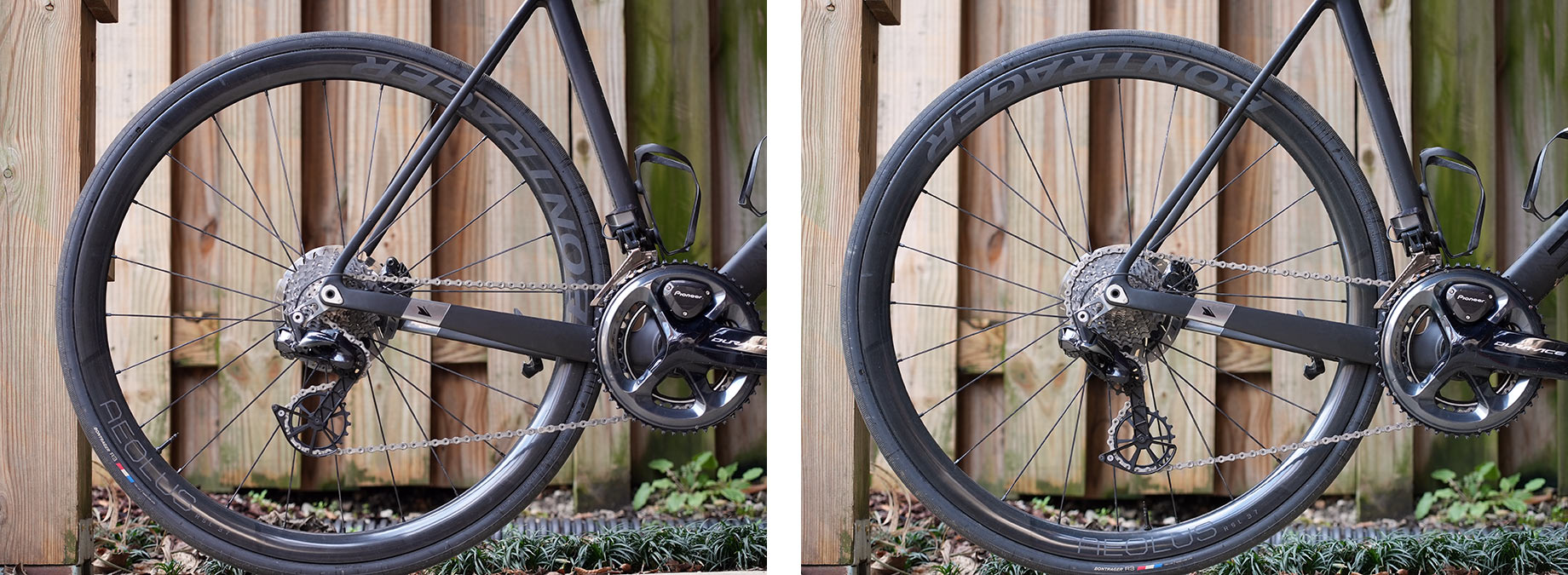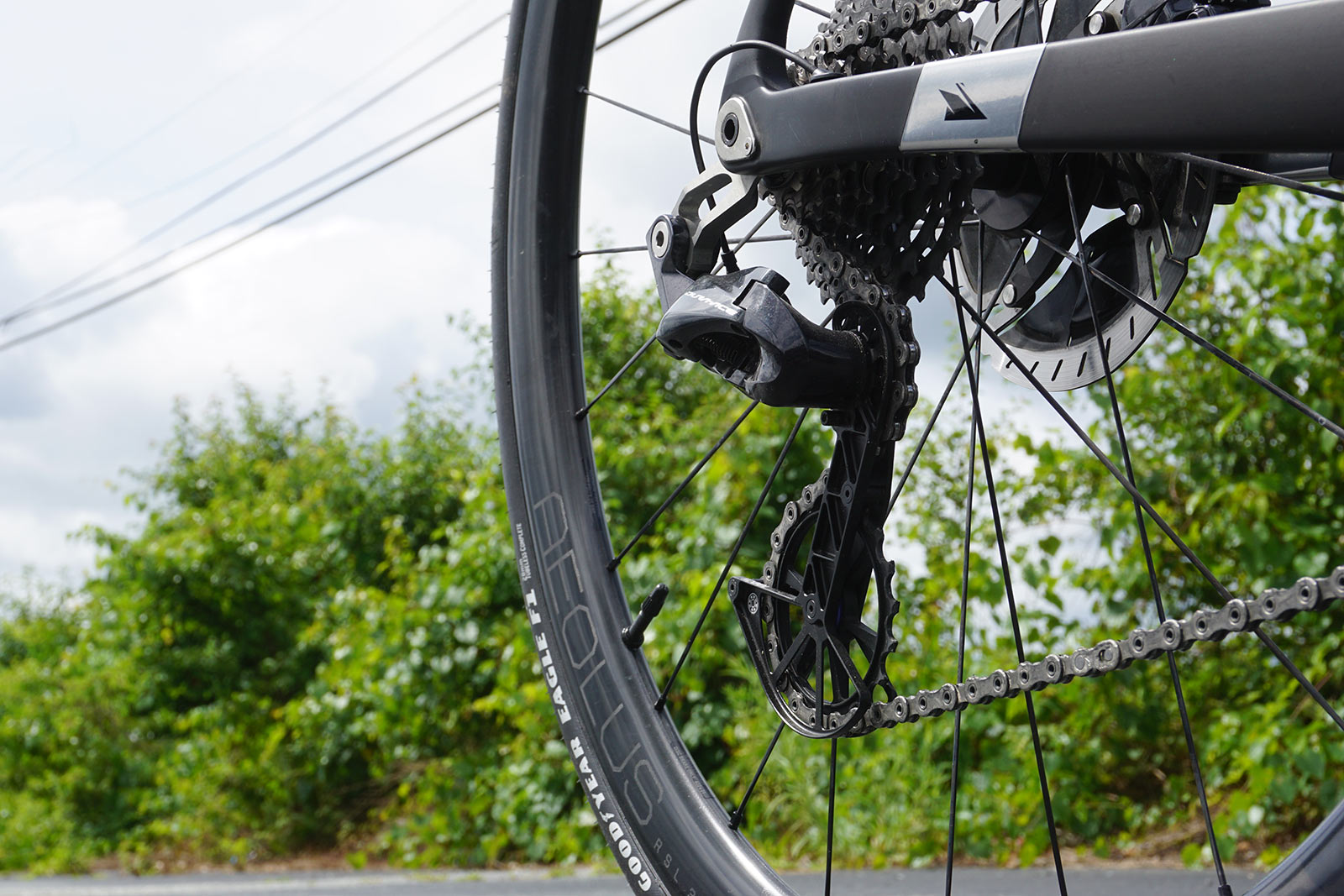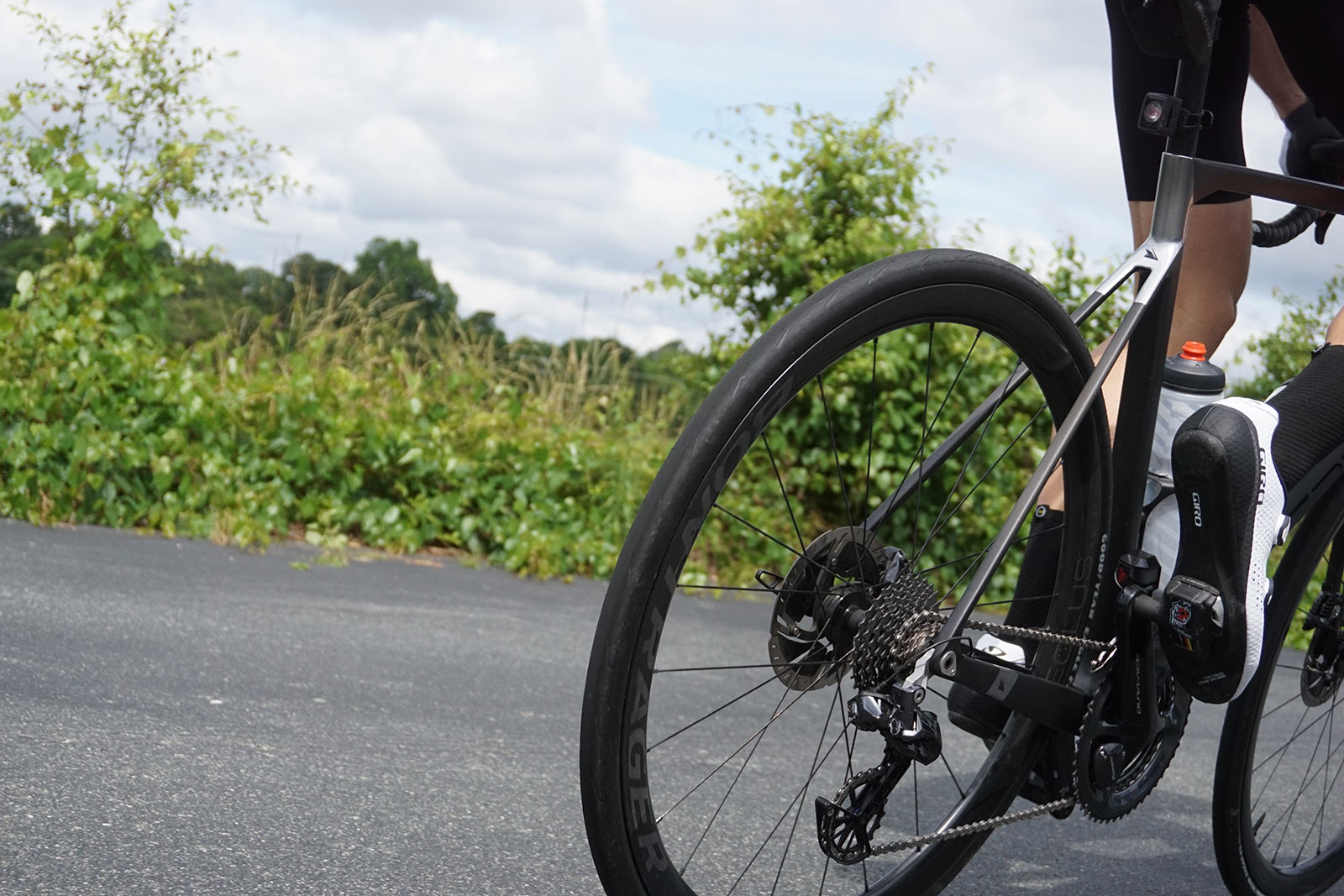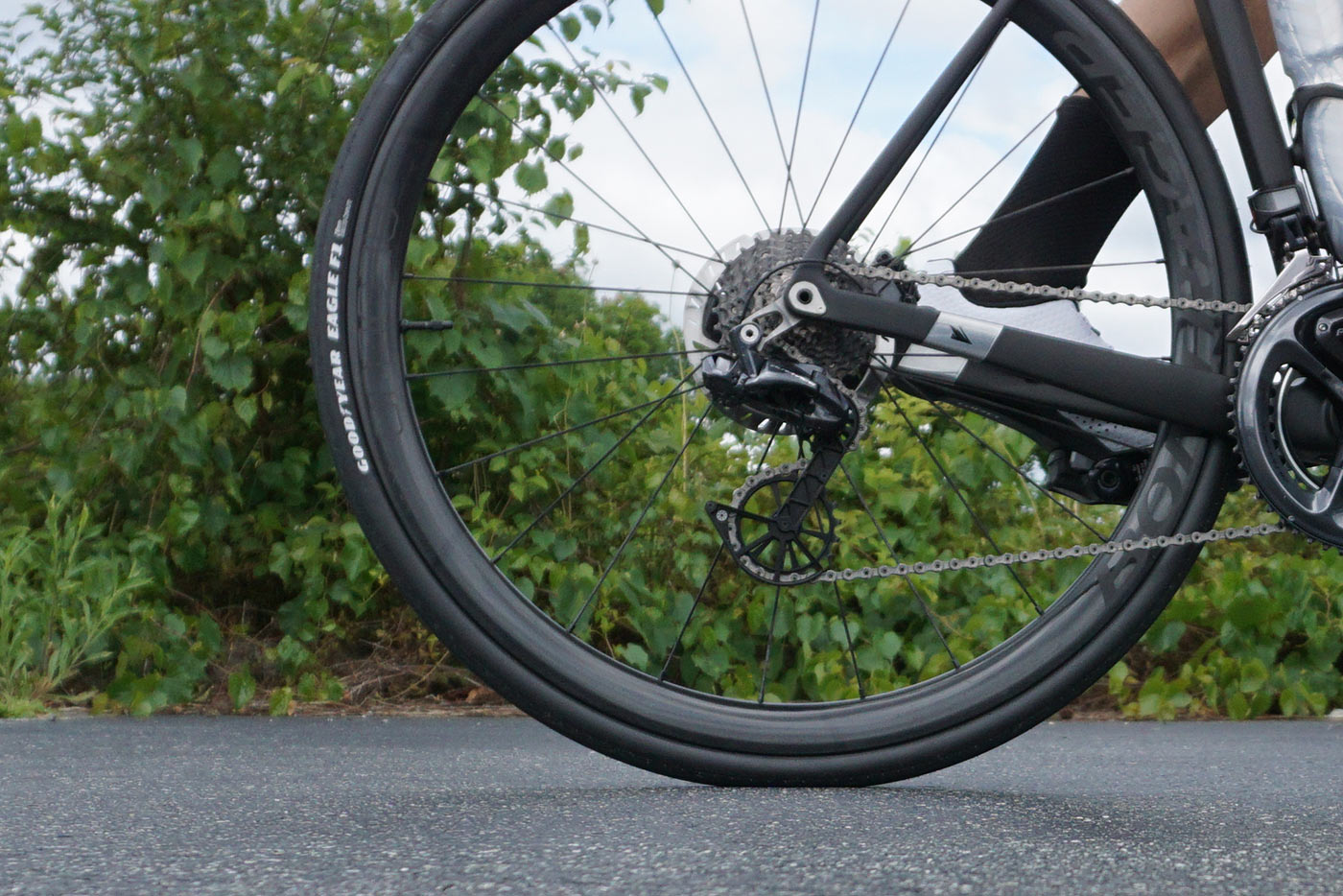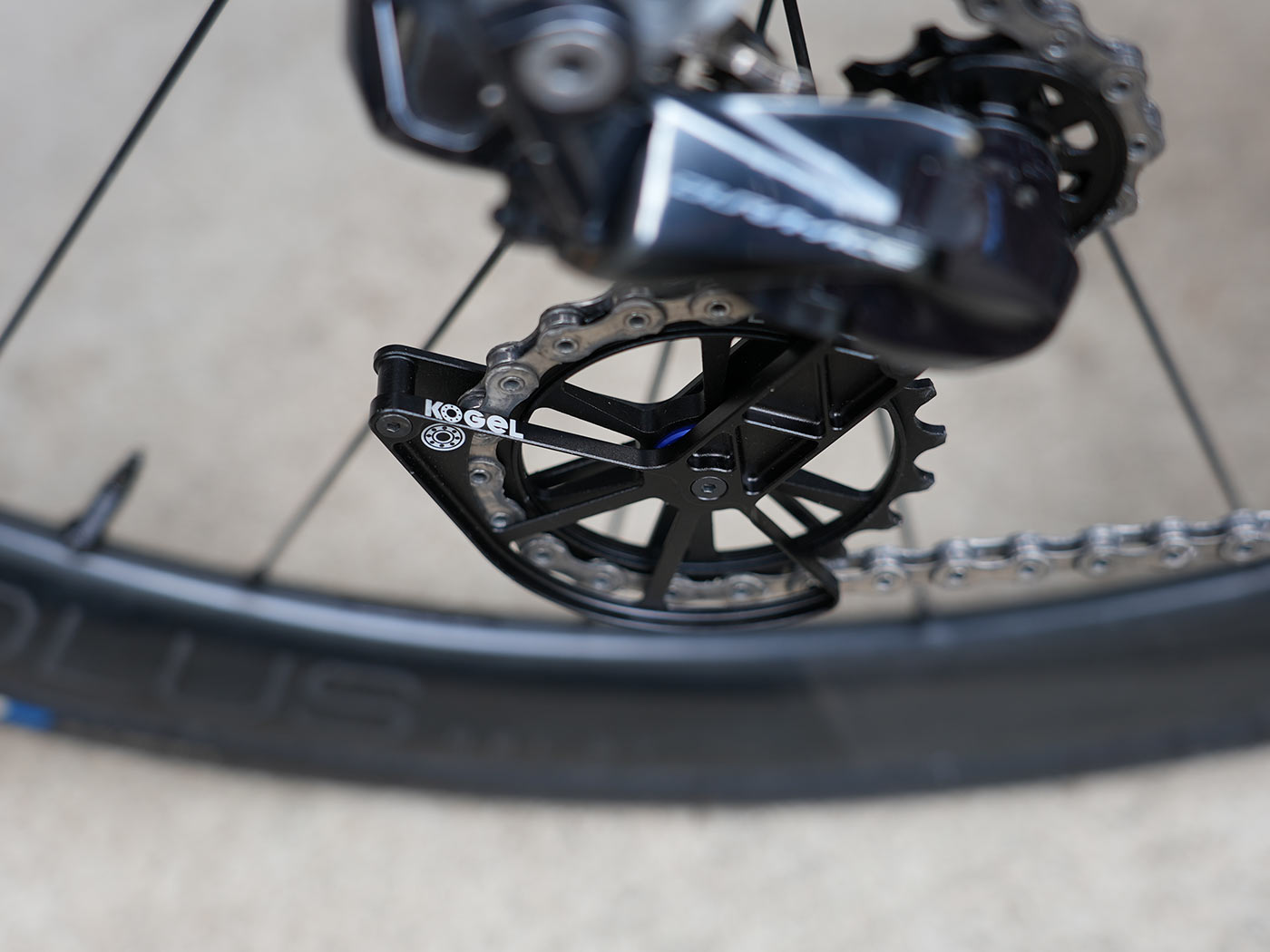There was a time when a 10-42 cassette on a mountain bike looked ridiculous. Then, seemingly overnight, it looked normal. And then their 50, 51, and 52-tooth successors quickly looked normal, too. To the point where a 36-tooth mountain bike cassette now looks anemic by comparison.
And such is the case after having installed the Kogel Kolossos pulley cage. All else now appears small and weak in comparison. And, in reality, they are.
Kogel Kolossos install notes & actual weights
The Kolossos oversized derailleur pulley uses a machined cage with trussed reinforcements to create an overly stiff, overly large replacement for the stock derailleur cage on your road bike.
They offer versions for Shimano, Campagnolo, and SRAM’s latest top-level road rear derailleurs, as well as mountain bike versions. I tested mine on a Dura-Ace Di2 R9100 rear derailleur that has seen countless miles.
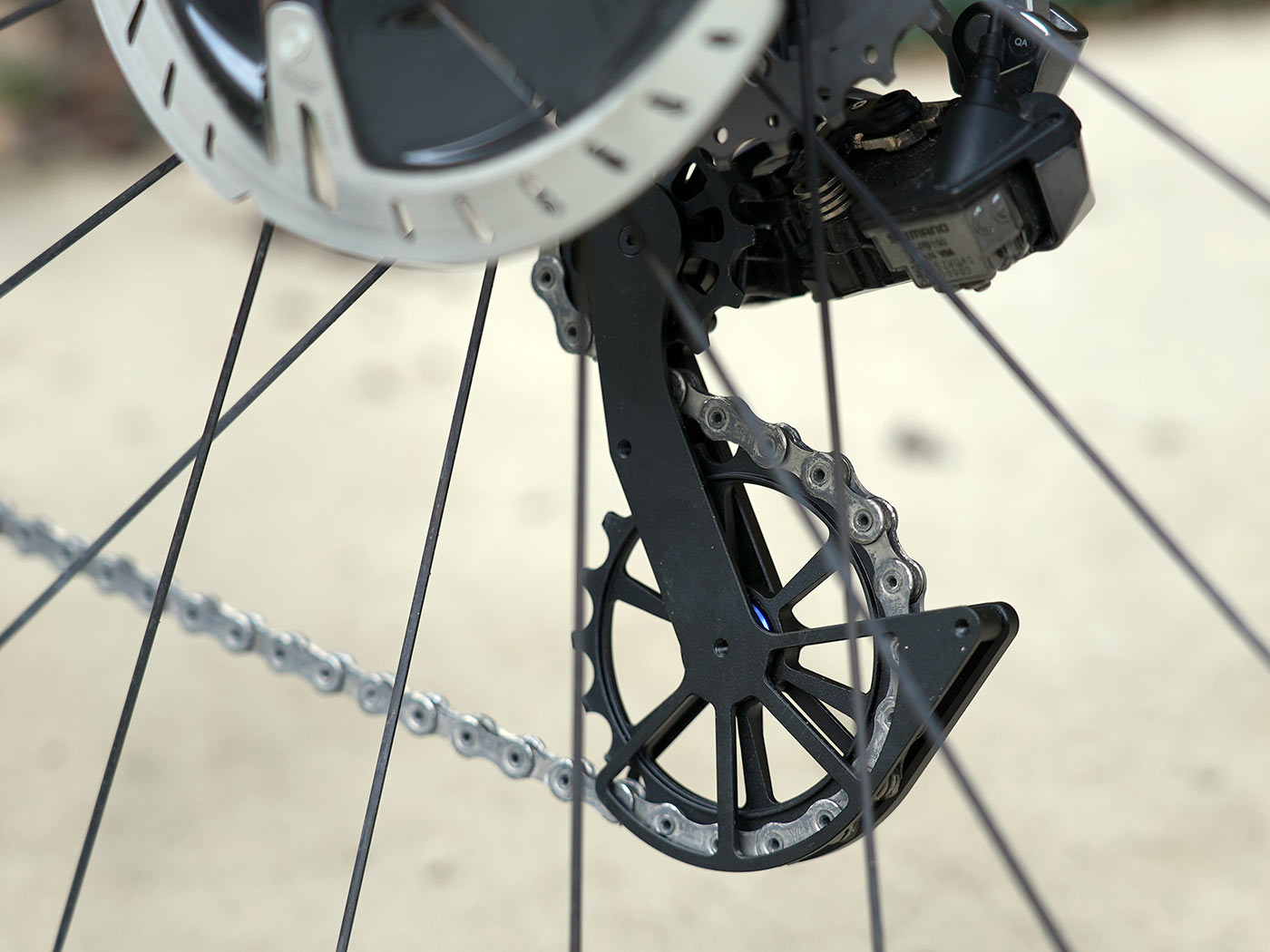
Where the stock Dura-Ace (and Ultegra) cage uses 11 teeth for both upper and lower pulleys, Kogel ups that to 12 and 19, respectively…and spins them both on ceramic bearings.
Installation is easy, but does require disassembly of the stock cage and will void your warranty. Kogel provides easy-to-follow instructions, but here’s a quick look at it:
The first step is removing the stock cage, which is just a few bolts, including the retention pin that you’ll need to reinstall with the Kolossos. You’ll also remove the Stop Pin and re-install onto the Kolossos in one of two positions, depending on whether you had a short- or medium-cage derailleur.
And you’ll reuse the spring and its seal, which simply slides off once you have it all disassembled.
What’s nice about Kogel’s design is they give you three different slots to notch the retention spring into. They advise starting in the middle position to test performance, but the others provide either higher spring return force for offroad/gravel riding or lighter force for smooth roads. The former will help with chain retention on bumpy stuff, the latter makes shifts easier.
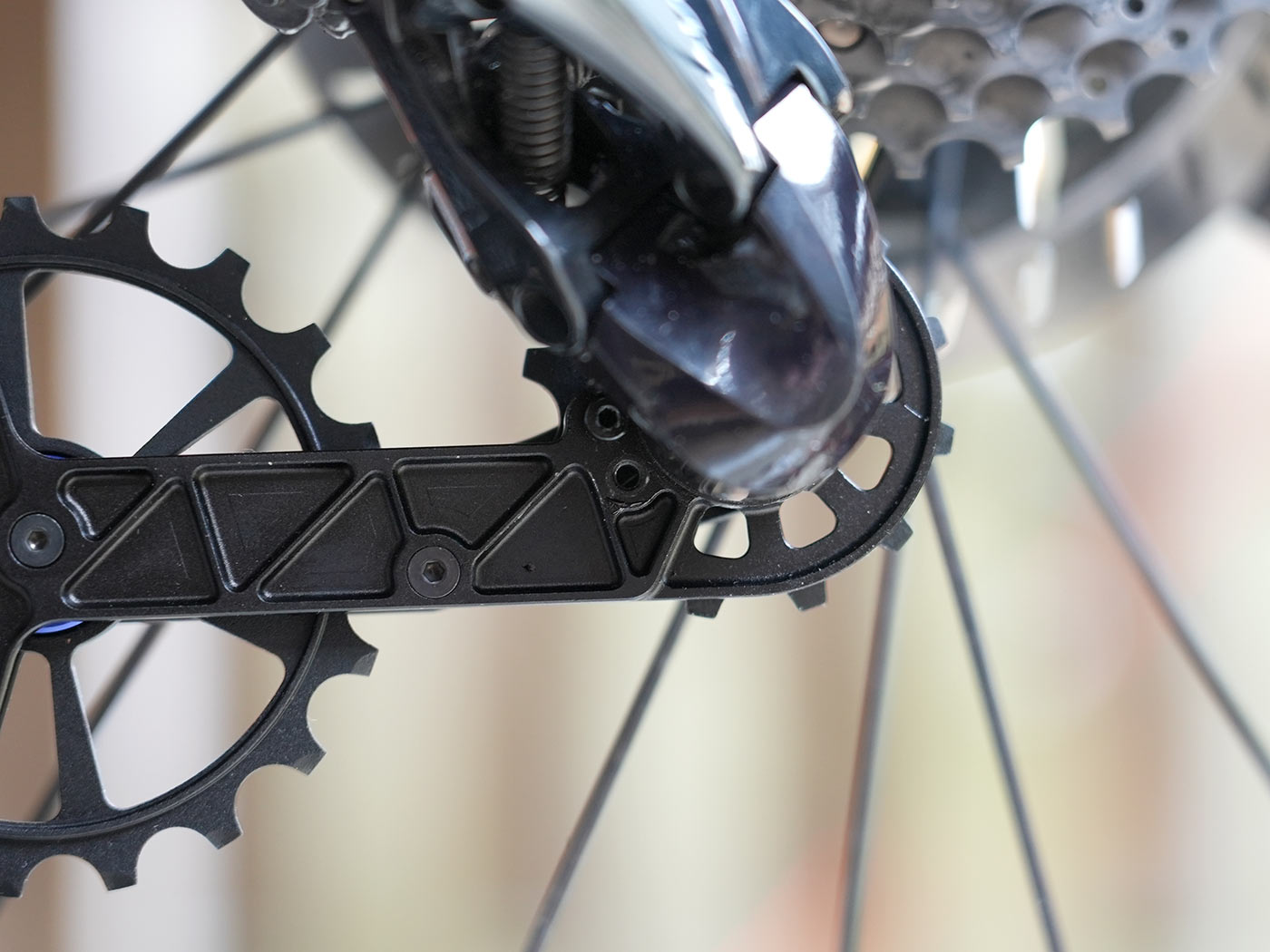
All told, the process took maybe 20 minutes, including minor adjustments to the B-screw and limit screws to fine tune placement on the bike.
The Kolossos added 38g to my derailleur. Kogel admits their cage might be a bit heavier than some other aftermarket oversize pulley options. They also say it’s stiffer, and I’ll explain why that’s a good thing in a minute.
How does it affect chain length?
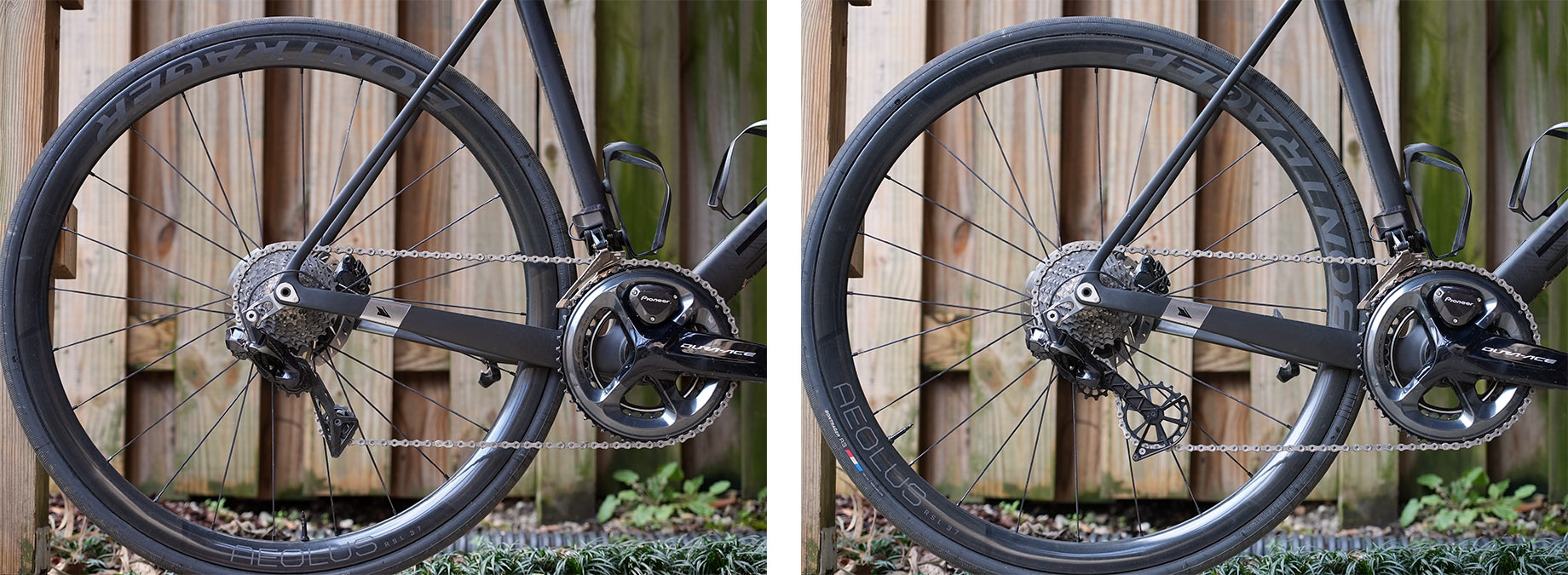
Kogel says that you may need to add a couple of links, but I didn’t have to. Above, the before and after with the chain in the big chainring and largest cog.
While I wouldn’t normally ride in the big-big combo, it’s always good to make sure the system can handle it. This might look like it’s at its limit, but it felt fine and shifted in and out of the big cogs smoothly and quietly.
And here’s a comparison of pulley cage positions in the smallest and largest cogs when shifted into the small ring. With both extremes tested and working just fine, there was no need to add links to my chain.
Kogel Kolossos ride review
The big question is, does this $400 upgrade improve performance?
Yes, but it’s definitely subtle. It’s hard to argue with bearings that spin freely when you’re holding it next to something that will get but a few revolutions for the same effort.
So, yes, these clearly have less drag, and thus reduce drag while pedaling.
Shimano’s Dura-Ace Di2 group’s shifting performance leaves little to be desired. But, a stiffer pulley cage that smooths the chain’s path through it will (or should, anyway) make things just a bit crisper and smoother.
But it’s subtle.
What’s less subtle is how much quieter it is. This, combined with a clean and properly lubed chain (with something like the CeramicSpeed UFO Drip, as used here), will effectively reduce your drivetrain noise to nothing. It’s impressive.
Also, I love the looks of it. I’m kinda having a hard time imagining the bike without the oversized addition now. It certainly stands out and has become quite the conversation starter, too…so there’s that, if you’re into that. (And if you’re really into that, they also make it in Gold and Red)
Is it worth it? Depends. There are certainly areas where $400 will make a bigger impact on performance. But if you’re down to the final few marginal gains to be had, the Kogel Kolossos OS derailleur pulley cage delivers smoother, quieter performance with crisp shifting and sharp aesthetics.
